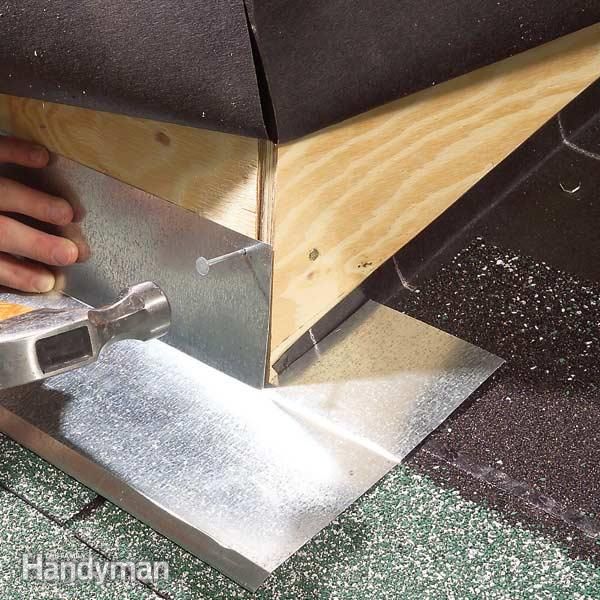Roof Under Flashing

Galvanized roof nails and roofing cement under each flashing step keeps the flashing in place and prevents water from sneaking under it.
Roof under flashing. Drip edges prevent water from seeping under roofing along the edges of rakes and eaves. They re applied under roofing felt along eaves and over roofing felt along rakes. Base flashing is one length of flashing that is bent along the length to match the pitch of the roof. The extra kick at the bottom of the face directs run off away from the structure.
When working with step flashing this may involve removing undamaged pieces of flashing as well. Storm proof roof 2. The upper sides of step flashing can be laid flush to the chimney side and cemented to the brick or stone attractively with roof cement that follows its staircase like upper edges. However it s important to check for damage anyway.
Continuous flashing protects the joint between a vertical wall and a sloped roof. If you find damage then you will have to get it. Drip edges are strips of flashing material that run along roof eaves and rakes to prevent water from seeping under the finished roof along its edges. How to repair roof flashing small holes or corroded spots in flashing can be easily repaired.
Be sure to follow the. Base flashing is installed over underlayment but under siding and shingles so you may not be able to see it from the ground. The majority of roof leaks occur in locations where the plane of the roof is interrupted by a ridge another roof intersecting at an angle a wall or penetration. First roughen the area around the hole with a wire brush or sandpaper and then clean it.
Plug pinholes with roofing cement and patch holes up to about 3 4 inch in diameter with a patch from the same material as the flashing. Gibraltar drip edge flashing can be used with asphalt shingles or metal roofing panels. This drip edge flashing provides protection from water damage along the eaves and rake of a roof. How to repair roof flashing step one.














































